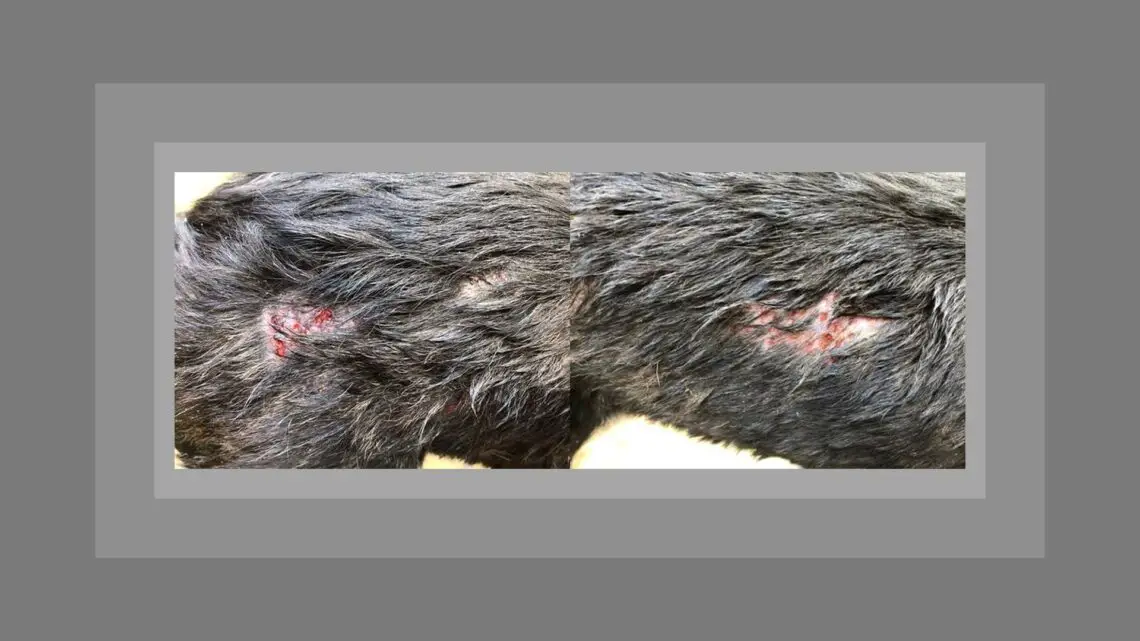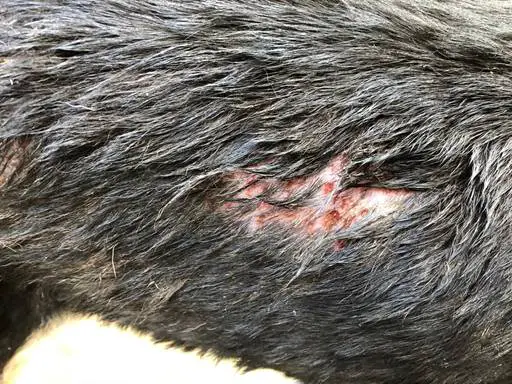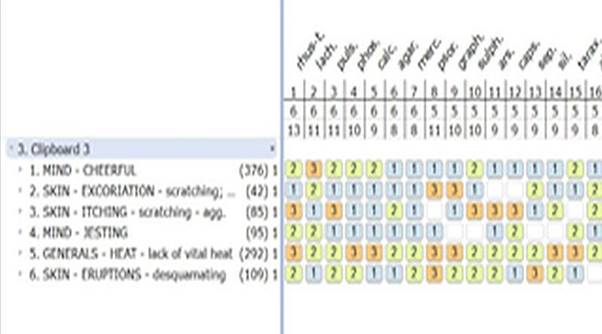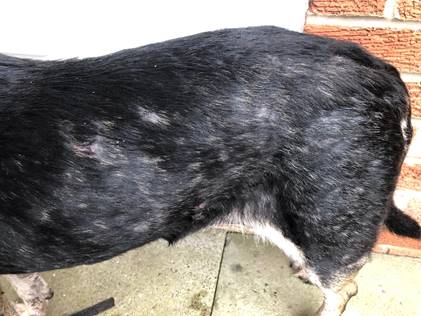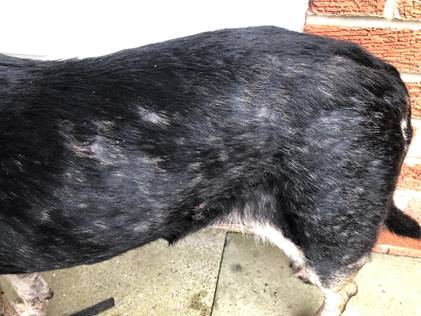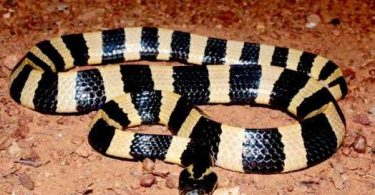Canine atopic dermatitis (CAD) is an incurable pruritic skin condition in dogs that is the result of a reaction to environmental or food allergens. It starts in young dogs under 3 years of age and requires lifelong management.
Abstract
This article describes a case of CAD in a 11-year-old female crossbreed dog who had been treated with conventional medication for many years with poor response. Homeopathic prescribing stabilised the case and produced a long-lasting improvement in all symptoms. It also highlights the importance of considering the totality of symptoms and in particular mental ones even when presented with severe physical symptoms.
Background
CAD is a genetically predisposed inflammatory and pruritic skin disease with characteristic clinical features, most commonly directed against house dust mites and pollens (Halliwell 2006). The management of this condition is complex as there are many patient and owner factors to consider.
Affected dogs may have impaired skin barrier function and immune dysregulation, which predisposes them to secondary bacterial and yeast infections. Conventional treatments include Steroids (Prednisolone), Cyclosporin (Atopica), Oclacitinib (Apoquel) and Immunotherapy. (Forsythe and Jackson 2020)
Case Report
A black female neutered crossbreed dog was presented in May 2020 with severe skin disease. She had been suffering from pruritus and secondary bacterial infections for 8 years and had been treated conventionally with Prednisolone, Atopica and Apoquel. The owners could no longer cope with seeing the dog distressed by its scratching and had given over care of the dog to their daughter who sought treatment with homeopathy.
Presentation
Physical symptoms
The dog presented with a dry scurfy skin that had several oozing sores where the dog had licked and chewed herself. (See photos – please note, the owner had rubbed coconut oil into the ulcerated area which is why the coat looks greasy, it was normally quite dry.)
The dog licked herself all over her body and would carry on licking until she made the skin bleed. The owners reported that the itching was intense and nothing seemed to give her relief. On a scale of 1-10, where 1 is the level of itching expected in a dog without allergies and 10 is very frequent and sustained itching which excoriates the skin and may cause secondary bacterial or yeast infections, the owners scored her as 9.
There was also widespread scale and several bacterial crusts and collarettes. The dog’s ears were full of thick black wax and she shook her head frequently but she liked you to rub her ears when they weren’t so painful. She also had interdigital cysts on all four paws that were dark red and made it difficult for her to walk for any distance. Symptoms were better for bathing and better in the morning.
Mental Symptoms
The owner reported that she was the happiest dog in the world! She rarely let her skin get her down. When it was really bad she could become slightly irritable but most of the time she was really cheerful. She was bouncy and giddy and had never bitten, even initially when bathing all the sores off and they said she made them laugh every day.
When I asked them to explain further, they said she’s just got a cheeky funny personality. She does stupid things which makes them laugh like putting her head on one side when they were talking to her, or taking the other dog’s toys and hiding them in her bed, not in a nasty way, just playfully.
She absolutely loves the other dog. Also, if you say the words ‘ears’ or ‘bath’, she would run into the other room and jump on the mother’s lap. She also scrapes the throw or cushions off the sofa and sits on them as though it’s a joke.
Her favourite activity is playing with balls and toys. She can be quite boisterous but can be caring too. When the owner fell over on a walk, she came straight over to see if she was alright. If she is ever told off, she doesn’t seem to realise it and never takes offence.
Generals Symptoms
Very Greedy dog, pushes the others out of the way, is on a homecooked diet. Average thirst. Loves the heat, actually shivers on a cold day.
April 2020 Before Treatment
Repertorisation
The rubrics used were
- Mind Cheerful
- Mind Jesting
- Skin Excoriation- scratching after
- Skin itching – scratching aggravates
- Skin eruptions – desquamating
- Generals – Heat – lack of vital heat
First Prescription 6/4/2020
Rhus tox scored highest on the Repertorisation but I chose Psorinum 200c as the first prescription. The striking features of the case were the intensity of the itching and the length of time and the numerous conventional treatments that the dog had received. I felt a miasmatic remedy may be useful initially to help ‘clear the case’. I also prescribed a high strength omega 3 supplement to help improve the quality of the skin and coat and advised green tea and chamomile foot baths to aid with the interdigital cysts.
Psorinum 200c one daily for 5 days
Follow Up 27/4/2020
The owners reported that the level of itching had reduced slightly (On a scale of 1-10, they now scored her as 8) but the dog was still licking and scratching to the point of damaging the skin, which was then quick to suppurate.
Several of the interdigital cysts had ‘burst’ and the dog was able to walk more comfortably. She was still quite restless and could be a little irritable if she had been scratching a lot but she was still very lively and ‘jokey’.
Second Prescription
On the second consultation, the owners emphasized how lively and cheerful the dog was even though the physical symptoms were severe. I felt this corresponded to the character of Rhus tox and together with the intensity of the itching and modalities chose to treat with Rhus tox 30c twice daily for a week.
Follow Up 19/05/2020
The level of itching had reduced, the owners now scored her as a 5, the ulcerated areas has started to heal and there was less scurf. The owners also reported that the dog seemed even more cheerful than normal. No new interdigital cysts had appeared. The remedy was not repeated at this stage.
Follow Up 10/06/2023
The dog continued to do well; the level of itching now being scored at 3. All ulcerated areas had healed and the fur had started to grow back. (See photos) The condition of the skin was generally better and the dog continued to be her usual happy self. The remedy was not repeated at this stage.
Follow Up August 2020
The dog had become progressively itchier over the previous two weeks, now scored as a 6. Her ears were inflamed and she was shaking her head frequently. A clinical examination revealed inflamed pinnae and some excess sebum production in the external ear canals and an increase in the dryness of the coat and some scurf. Rhus tox 30c was repeated twice daily for 1 week.
Follow Up September 2020
Skin symptoms had resolved, the level of itching was being scored as 2-3 and the ears appeared normal on examination.
Follow Up January 2021
The owners reported a flare up of the skin symptoms. The dog was chewing and nibbling herself all over her body and the fur on her legs had become thin. Her pinnae were inflamed and there was some dark discharge in the external ear canals.
She shook her head frequently. There was also an increased level of scurf and the coat was quite dry. There were no areas of ulceration however, or a recurrence of the interdigital cysts. The dog had been a little more irritable and quiet in the last week but the owners still described her as a happy dog overall.
She liked to be outside and go for a walk and still played with her toys.
The dog was checked for external parasites such as fleas and mange mites but was found to be negative on skin scrapes. Prescription – Rhus tox 200c 1 daily for one week.
Follow Up February 2021
The symptoms had improved rapidly following the course of Rhus tox 200c. The level of itching was described as a 1-2 on most days. The coat quality was much improved and the ears had cleared completely.
Subsequent Follow Ups
The dog remained well for the next two years, Rhus tox 200c was repeated on one more occasion in 2022 after the owners had some building work done and there was an increased level of dust in the environment. Again, the symptoms of itching decreased within 2-3 days of the prescription and the skin and fur quality improved. The dog died of natural causes in March 2023.
Discussion
Consultations for skin problems in small animals form a significant percentage of the total number of consultations carried out in general practice. (Hill et al 2006) Canine Atopic Dermatitis can be a challenging condition to treat and often requires lifelong medication.
A number of different therapies are available but there are side effects associated with all of them. This case shows how homeopathy can successfully be used as a treatment for CAD. There are many remedies that could be considered in the treatment of CAD. In this case the intensity of itching was a key feature and other remedy possibilities included Sulphur, Graphites and the spider remedies which all show itching to an extreme degree.
The heat modality was incorrect for Sulphur and although restlessness was a feature, it wasn’t considered extreme enough for a spider remedy. The distribution and type of skin lesions were not typical of Graphites and there was no cracking of the skin or oozing.
The interdigital cysts were a feature of the case initially and were described as dark red, almost blueish by the owner. Lachesis could have been a possibility here along with other snake remedies, but the dog’s mental picture was not consistent with a snake remedy. Silica is a common remedy used for chronic suppurative cysts in animals but again the mental picture didn’t fit well. Skin conditions requiring Rhus tox are usually intensely itchy which often leads to ulcerative lesions and suppuration in animals. Abscesses can also be a feature. Interdigital cysts are considered a deep pyoderma in animals.
The initial remedy choice, Psorinum, was influenced by the severity of the itching and the knowledge that this dog had been treated with a variety of conventional medicines over several years. The coat was also dry and ‘dirty’ looking.
It may well have been the case that Psorinum had an effect at some deeper level but the dog showed a rapid and marked response to the second remedy, Rhus tox. The choice of this second remedy was based much more on the totality of the symptoms, placing equal weight on the mental symptoms as well as the physical.
In animals the breed should always be considered. Many breeds have distinct traits which must be taken into account when repertorising a case. A German Shepherd dog will invariably be protective and a Labrador invariably hungry, so these traits shouldn’t be thought of as significant in those breeds.
If a Labrador had a capricious appetite, that would certainly be of interest! When thinking of a breed that typifies a Rhus tox constitutional type, a Jack Russell Terrier if often cited, a lively, happy dog that like to be outside and playing but can be irritable. Of course, it is important not to stereotype any individual and this dog was a medium sized crossbreed.
I believe this case taught an important lesson, that despite severe and very obvious physical symptoms, the mental symptoms should not be relegated during analysis.
References
1HALLIWELL, R, (2006) Revised nomenclature for veterinary allergy, Veterinary Immunology and Immunopathology 114, 207-208
2FORSYTHE, P, JACKSON, H. (2020) New Therapies for atopic dermatitis, In Practice 42, 82-90
3 HILL, PB, LO, A, EDEN, CAN, and others (2006) Survey of the prevalence, diagnosis and treatment of small animal dermatological conditions. : Veterinary Record 16, 533-9

